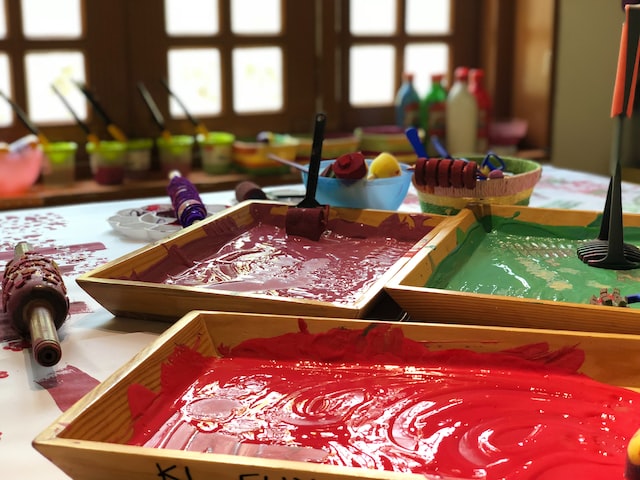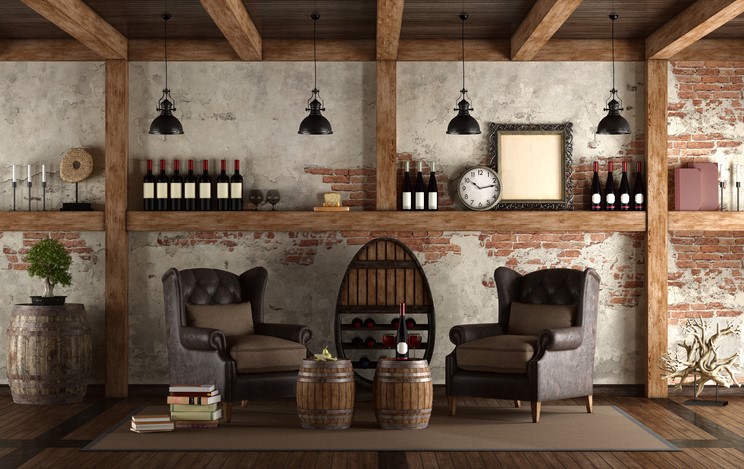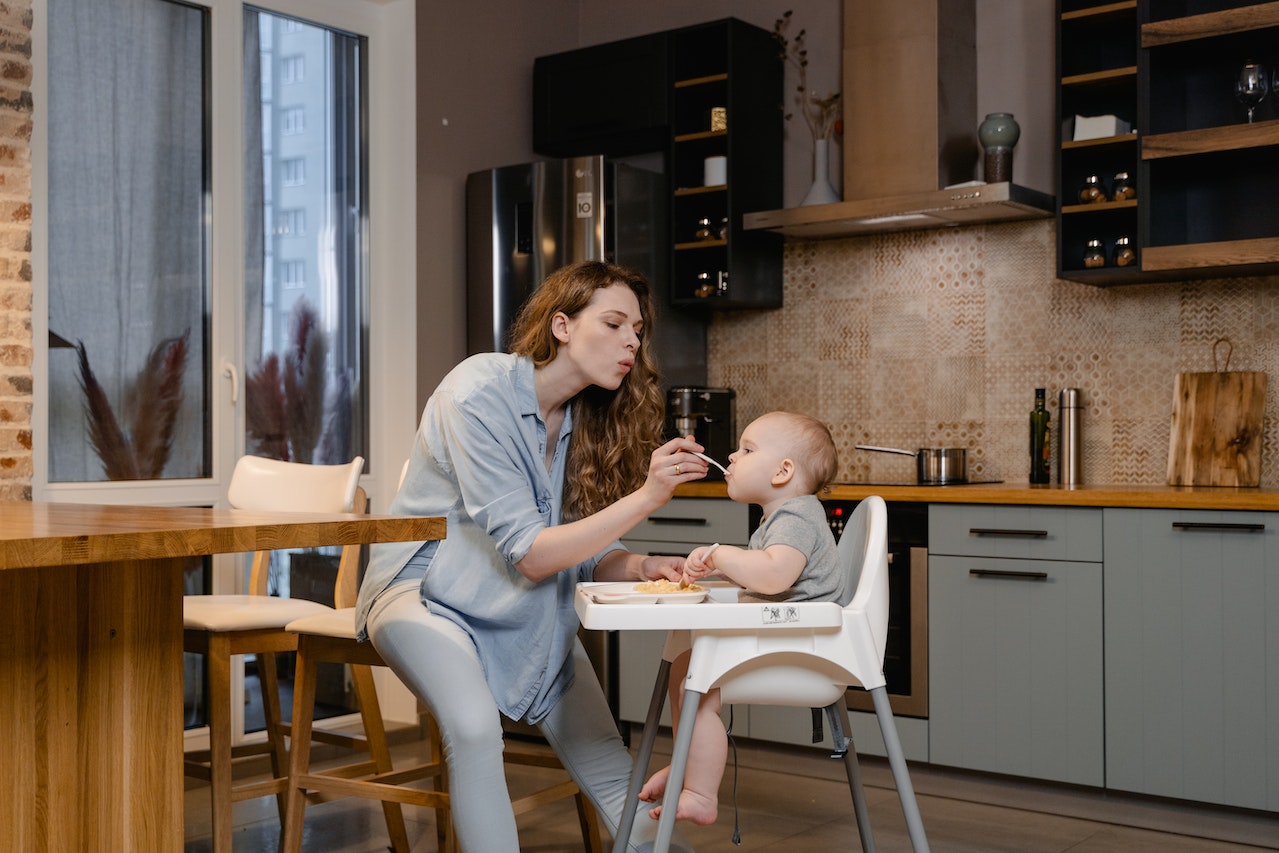As the landscape of the working world changes, many parents work remotely and need childcare during the day or a childcare option that’s easily accessible to them on their way to and from work. Enter you, the home daycare worker. Setting up a daycare from home requires careful planning and preparation, but it will no doubt be a rewarding adventure. Read on to learn everything you need for your home-based business to be a roaring success.
Benefits of Starting a Home Daycare Business
If you’re already thinking of opening a childcare business, chances are you’ve considered the numerous benefits, like being a trusted resource for parents, giving children a safe and warm place to learn and grow, generating income, and spending time in your home while you’re working.
Below are some of the main benefits you’ll find when running a daycare from home, and you’re sure to find plenty more to love about it, too.
Benefits for Parents
- Reducing stress by being confident that their children are in a secure environment while they’re working.
- Having a resource that they’re comfortable with in cases of emergency if they need last-minute childcare.
- Having a fun and engaging place for their kiddos to learn and socialize with other children their age.
Benefits for children
- Having a comfortable place to work on their social and emotional development.
- Meeting new friends and knowing that they have a secure place from which they can take comfort and confidence.
- Daycare is fun!
Benefits for the Owner of a Home Daycare
- Overhead costs are lower when you run a business from your home.
- If you are a stay-at-home parent, you can spend more time with your family and provide your kids with a fun social environment.
- As you grow, you’ll create jobs for others in your community.

How to Set Up Your Home Daycare
The main thing you’ll need to do to get rolling immediately is to apply for a daycare license. This varies from state to state, but overall, it’s not an arduous process. It’s a crucial part of the process because you won’t be able to run a daycare without it, not even for a single day. It’s essential to get the application process started as soon as you decide that you’re going to move forward with your new business.
Create a Business Plan
A business plan is essential to a successful and growing childcare business. When you’re creating a business plan, establish SMART goals, look into licensing requirements, determine a plan to solve potential problems, create a marketing plan, and outline costs and revenue systems. There are many online templates for business plans that you can use as a jumping-off point.
Licenses and Permits
In addition to the Family Childcare License, each state’s individual daycare license process is different. In almost all cases, you can expect online training sessions, background checks, and a home inspection to meet all licensing requirements. Each state also has different penalties for operating without the proper daycare license. Skipping this step is not worth the risk, so make sure you’re up-to-date and ready.
Transportation
A great way to help parents save time is by offering a pick-up and drop-off service for your home daycare. You will need suitable transportation, such as a minivan, SUV, or a passenger bus. Consider how many car and booster seats you’ll need to accommodate your tiny passengers. Remember that safety is a priority. Invest in insurance, make sure your kid commuter has a recent CPR certification, and there is a first aid kit inside the vehicle at all times.
Insurance Coverage
When starting a home daycare, it’s important to consider the different types of insurance coverage that you may need to protect yourself and the children in your care. Liability insurance is a must-have for any home daycare provider, as it can help protect you in case a child is injured while under your care. Additionally, it’s a good idea to consider obtaining home insurance that covers property damage. Take the time to review your insurance options and obtain the right coverage. You can have peace of mind knowing that you and the children in your care are protected.
Purchasing Equipment
Children require safe materials and equipment. Make sure your home has the space to allow children to play, eat, and nap safely. Your space needs to be 100% safe and child-friendly, so if you need to make changes to the interior structure of your home to accommodate your new childcare business, it’s best to hire a pro. Smaller upgrades can be done with a healthy dose of DIY spirit, but a professional should do things like moving walls or creating new rooms.
Children’s play area
- Child-size furniture – Tiny tots need tiny furniture! They’ll love fun themes like animals and dinosaurs.
- Arts and crafts tables and chairs – Arts and crafts time is critical for little ones to develop creativity and confidence. A great crafts area will be a quick favorite.
- Toys that encourage the development of fine motor skills – From blocks to stack to toys that encourage associating shapes and placing objects into matching places, motor skill development toys are essential.
- Sensory play activities – Another favorite for most kiddos. Sensory play activities like sandboxes, Play-Doh, and anything gooey and squishy help with cognitive development (and it’s super fun).
- Costumes for dress-up – Even the most reserved kids can usually get caught up in a good round of dress-up!
Mealtime Supplies
- Highchairs
- Kid-sized cups, plates, and utensils.
- Lots of napkins and paper towels.
- Sanitizer spray to clean up tables and chairs post-meal.
- Bibs for adorably messy eaters.
- A washable rug or flooring for under your mealtime area.
Naptime Supplies
- Cribs with child-safe mattresses and bedding.
- Mats or beds for bigger kids.
- Blankets for everyone to get snuggly with.
- Pillows to get extra cozy and promote restful and comfy naptimes.
- Baby monitors for each room so you can listen while catching up on cleaning and prepping for post-nap activities.
- A diffuser or calming sleep machine to lull reluctant sleepers to dreamland.
Storage Items
- Cubbies for personal items.
- Hooks for coats.
- Bookshelves that are accessible for each age range.
- Storage cabinets or boxes for craft supplies and activity-related materials that you don’t want to be open to the little ones.
- Toy bins to keep everything off the floor but still accessible.
Bathroom and Changing Station
- Stepping stool for little legs that can’t reach.
- A toilet seat adapter for little ones at different stages.
- A safety release door so no one can get locked in.
- A sturdy changing table.
- A diaper disposal pail.
- Baby wipes for quick cleanups.
Outdoor Play Area
- An outdoor play set with enough areas to accommodate multiple kiddos.
- A sandbox with outdoor toys.
- Safe flooring for accidental landings.
- A picnic table for resting and seated outdoor activities.
- Larger toys that are suitable for weather like rain, snow, and sun.
Safety Supplies
- A first-aid kit for quick fixes of scrapes, bumps, and other injuries.
- Cabinet locks to keep curious hands from places they shouldn’t be.
- Outlet protectors so tiny hands won’t get shocked.
- Carbon monoxide and smoke detectors in case of emergencies.
- Exit signs that little ones know to follow.
- Safety gates at stairs or other potentially hazardous places.
Finding Your First Families
Finding the first families for your at-home daycare will be easier if you can find ways to empathize with working parents. Help ease any feelings of guilt they might have about leaving their kiddo for the workday. Remember that parents want their kids to feel secure and comfortable in their daycares, but they also need to feel the same to feel good about leaving them.
Get the word out about your childcare business offline and online. Create and print out flyers and business cards with QR codes to hand out at the local school’s PTO meetings, soccer games, and other kid and parent-friendly events. Establish an online presence by setting up online profiles and joining social media groups to promote your business. If a parent shows interest, offer a tour of your home daycare to help them feel at ease.

How to Maintain Your Home Daycare
After the initial setup, you’ll want to make sure that all that hard work stays clean and organized. Following this simple schedule will help you to keep your home daycare as tidy in your third year as it was on your first day.
Cleaning Up
Depending on the number of children you have enrolled, hiring a professional cleaning service for your daycare might be an option to relieve you from the stress of picking up inevitable messes and making sure every area is well taken care of.
Food Safety
Make sure equipment is clean for preparing, cooking, and serving food. Be aware of allergies and any other dietary restrictions of all children. Store food correctly and promote a healthy and balanced diet.
Home Daycare Best Practices
Having a schedule set out and written down will help you to make sure your home daycare runs like clockwork.
Daily Tasks
- Keep attendance each morning and check out each child at the end of the day.
- Clean and disinfect shared areas.
- Clean and disinfect equipment and toys, tables, chairs, etc.
- Clean and disinfect cubbies, hooks, and nap areas.
- Put away toys and dress-up clothes.
- Vacuum hard surfaces to make sure they’re clear of crumbs and dirt.
Weekly Tasks
- Create a weekly meal plan for getting groceries to ensure you have the right amount of food and snacks.
- Deep clean your home daycare.
- Wash all naptime bedding.
- Sanitize and wash all dress-up clothes and costumes.
- Review your business expenses.
Monthly Tasks
- Test smoke and carbon monoxide detectors.
- Ensure safety measures are still securely in place.
- Inspect and replace any damaged equipment or toys that could be harmful.
- Conduct an evacuation drill with the children.
- Review your monthly budget and adjust as new expenses become regular occurrences.
Annual Tasks
- Ensure you’re up-to-date with your certifications and licenses.
- Renew your pediatric CPR certification.
- Get updated permission forms from parents.
- Update the children’s files with any new allergies, medical conditions, etc., that haven’t been updated throughout the year.

Opening a home daycare is a wonderful way to give back to your community. By providing jobs and giving parents and children a safe and secure place to provide peace of mind, you’re doing a tremendous service to those around you. Home daycares can be chaotic and hectic in the most rewarding way because you’ll know you’re making a difference to each parent and child.




